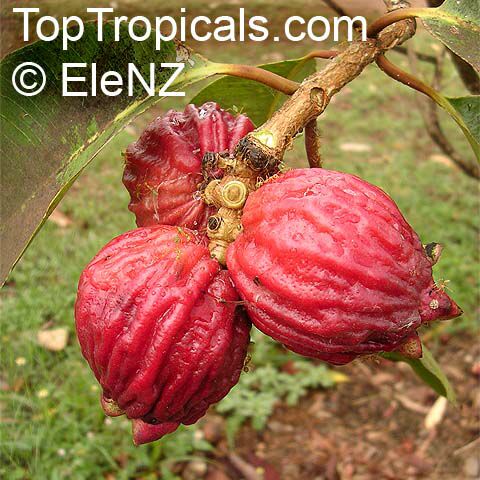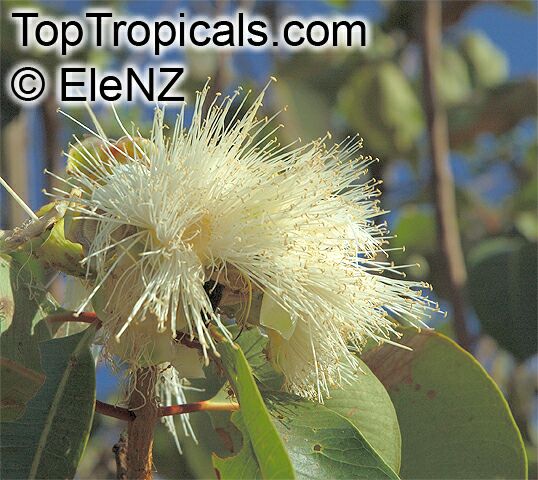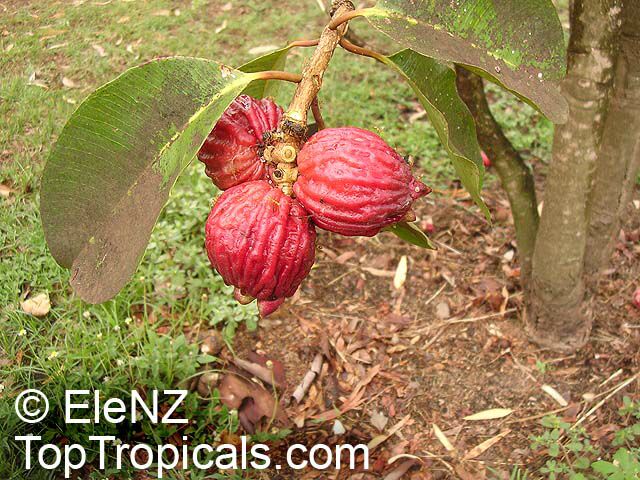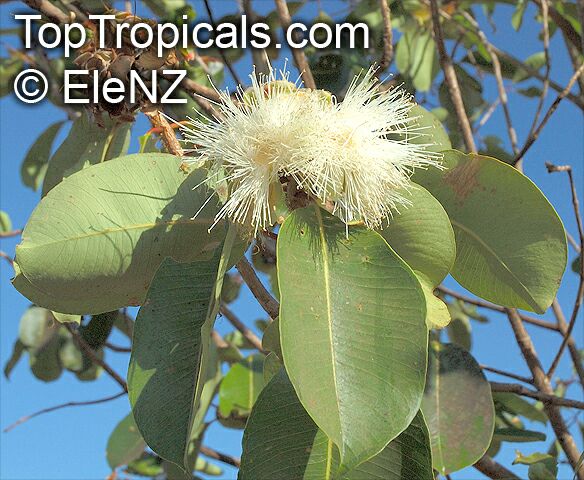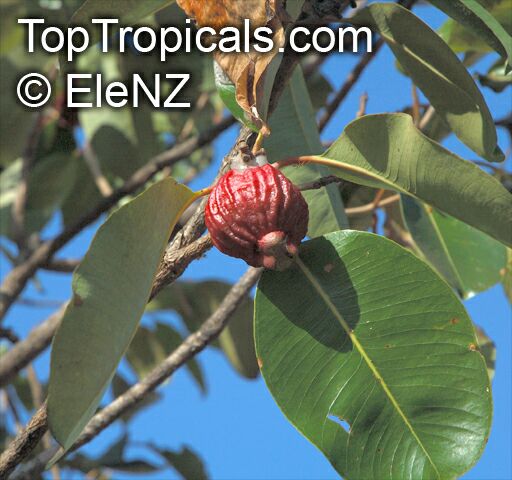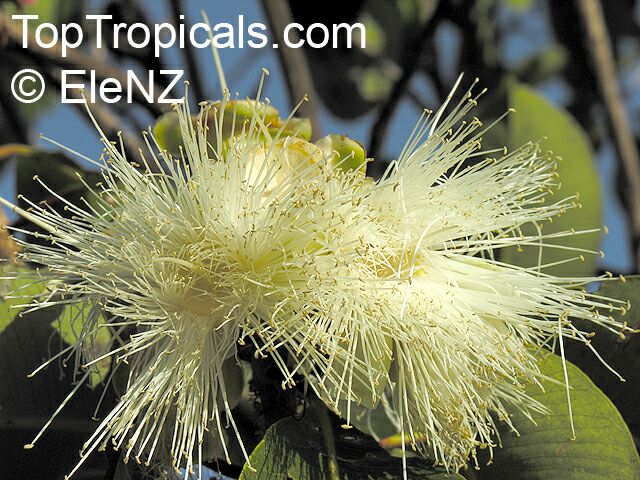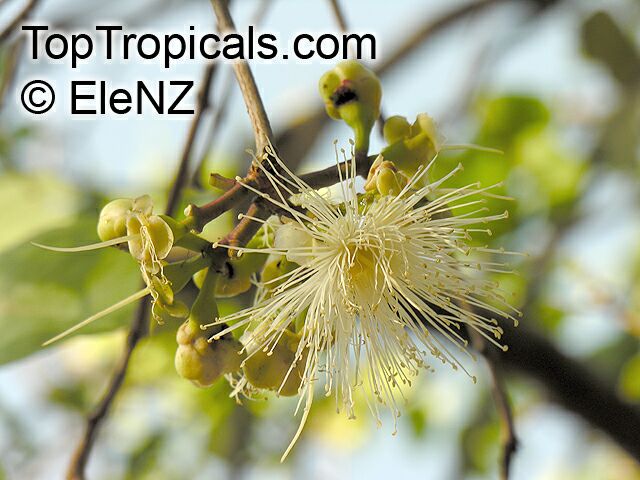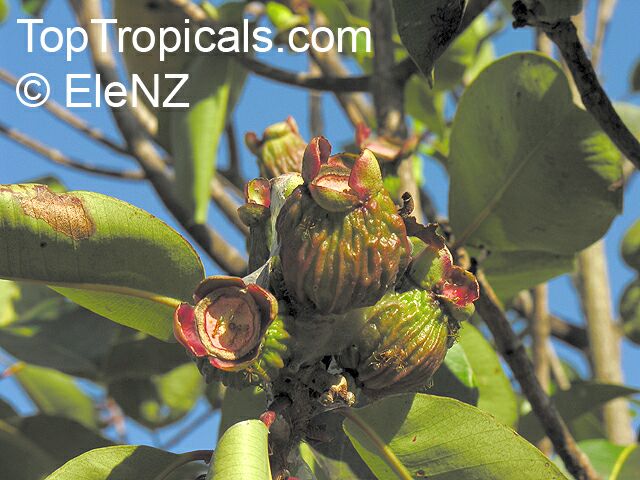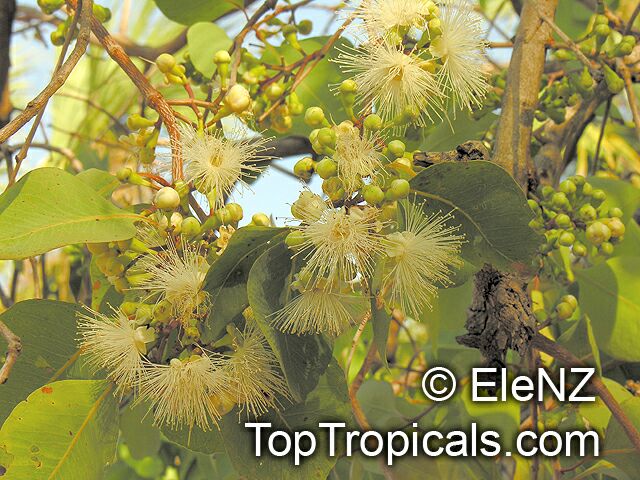Syzygium suborbiculare (Red Bush Apple)
Top Tropicals Plant Encyclopedia
Botanical names: Syzygium suborbiculare, Eugenia suborbicularis
Common names: Red Bush Apple, Lady Apple
Family: Myrtaceae
Origin: Australia









Syzygium suborbiculare (Red Bush Apple) is a large shrub or small tree that typically grows 5-10 ft tall, but can reach up to 20 ft in full sun with moderate water. It is native to Australia, and well-known for its ethnomedical properties. It produces white or off-white flowers that attract butterflies and hummingbirds.
The fruits of Syzygium suborbiculare are a characteristic dark blood red color, with a firm and crunchy flesh that easily breaks away from the single large seed. The fruit is sour and tangy, and is both edible and highly coveted among bush travelers. Aborigines have been known to use the fruit for medicinal purposes, such as treating chest congestion and earache. On average, each tree produces between 5-15 fruits each year, but when provided with the right conditions, a mature tree can potentially produce up to 40 or more. Nutritionally, the fruits are high in vitamin C, beta-carotene, fructose, and various other minerals and antioxidants. They have been found to help boost the immune system, reduce inflammation, and improve digestion.
Given its drought, salt spray, and fire resistance, Syzygium suborbiculare makes a great addition to any garden, especially in areas with dry tropics. It provides a good amount of shade, stunning white flowers, and delicious red fruit with many health benefits.
Similar plants: Syzygium suborbiculare (Red Bush Apple)
- Syzygium antisepticum (Kalaum)
- Syzygium aqueum (Water Cherry)
- Syzygium aromaticum (Clove)
- Syzygium campanulatum (Wild Cinnamon)
- Syzygium jambos (Rose apple)
- Syzygium malaccense (Malay Apple)
- Syzygium myrtifolium (Wild Cinnamon)
- Syzygium paniculatum (Australian Brush Cherry)
- Syzygium samarangense (Wax jamboo)
- Syzygium australe (Scrub Cherry)
